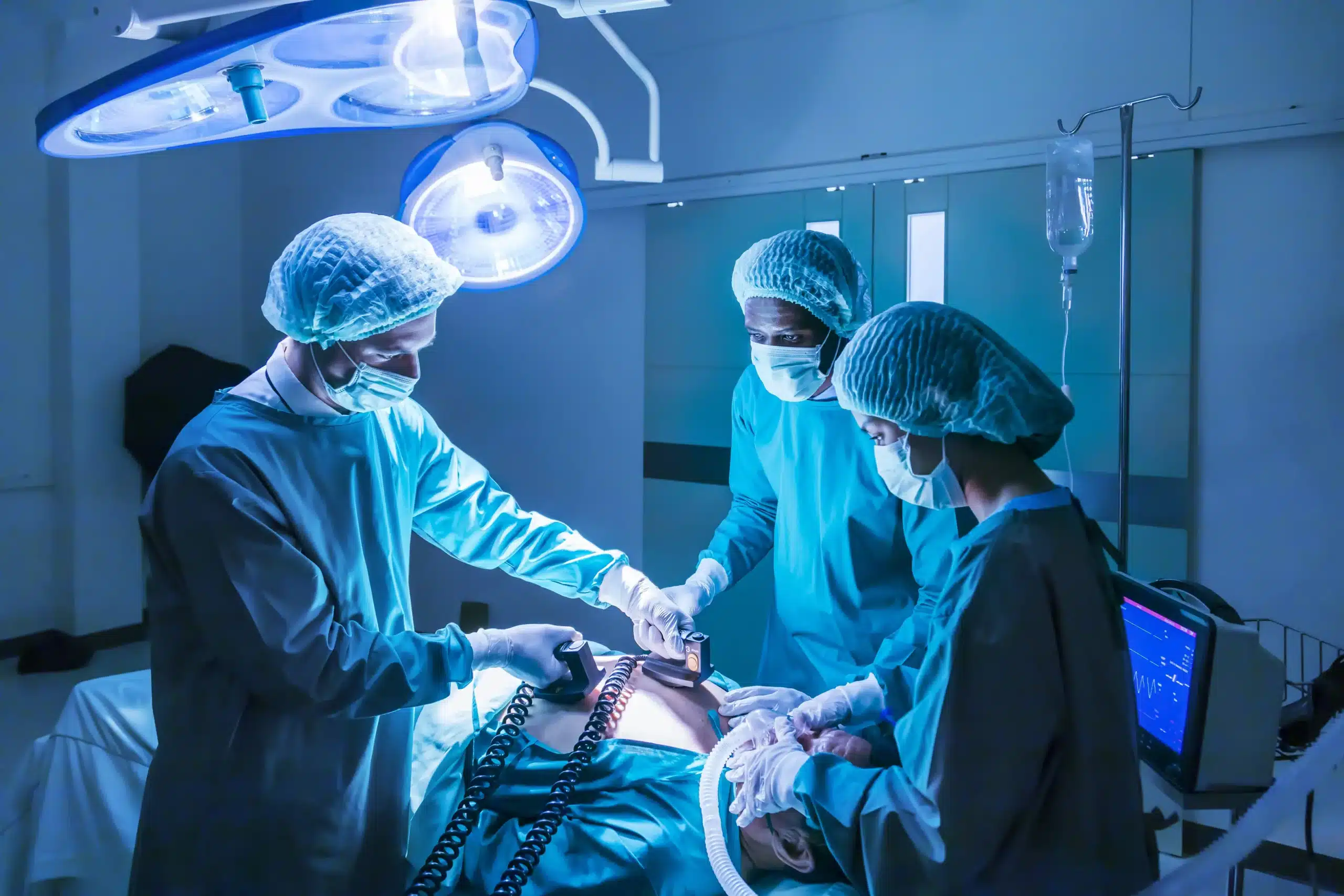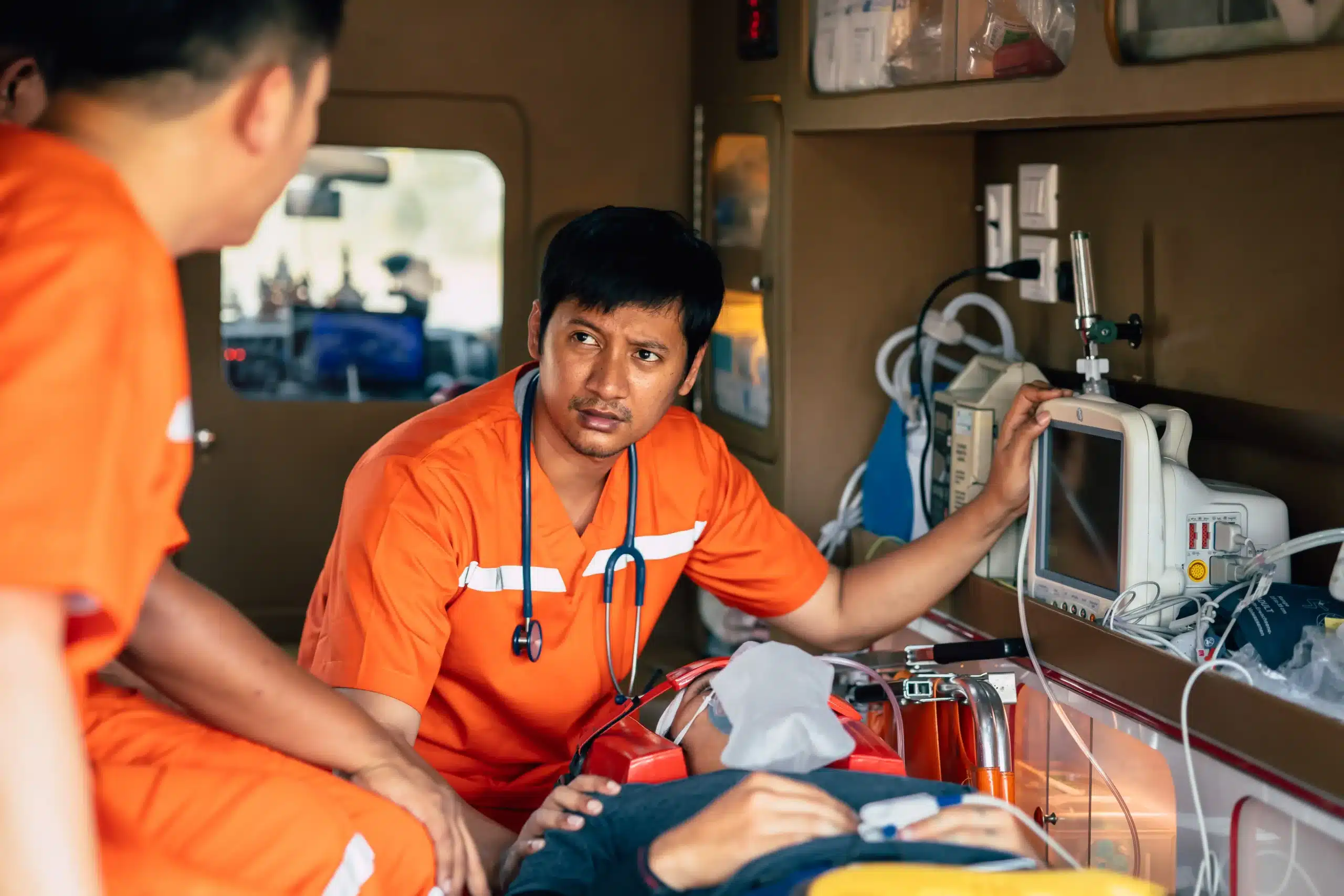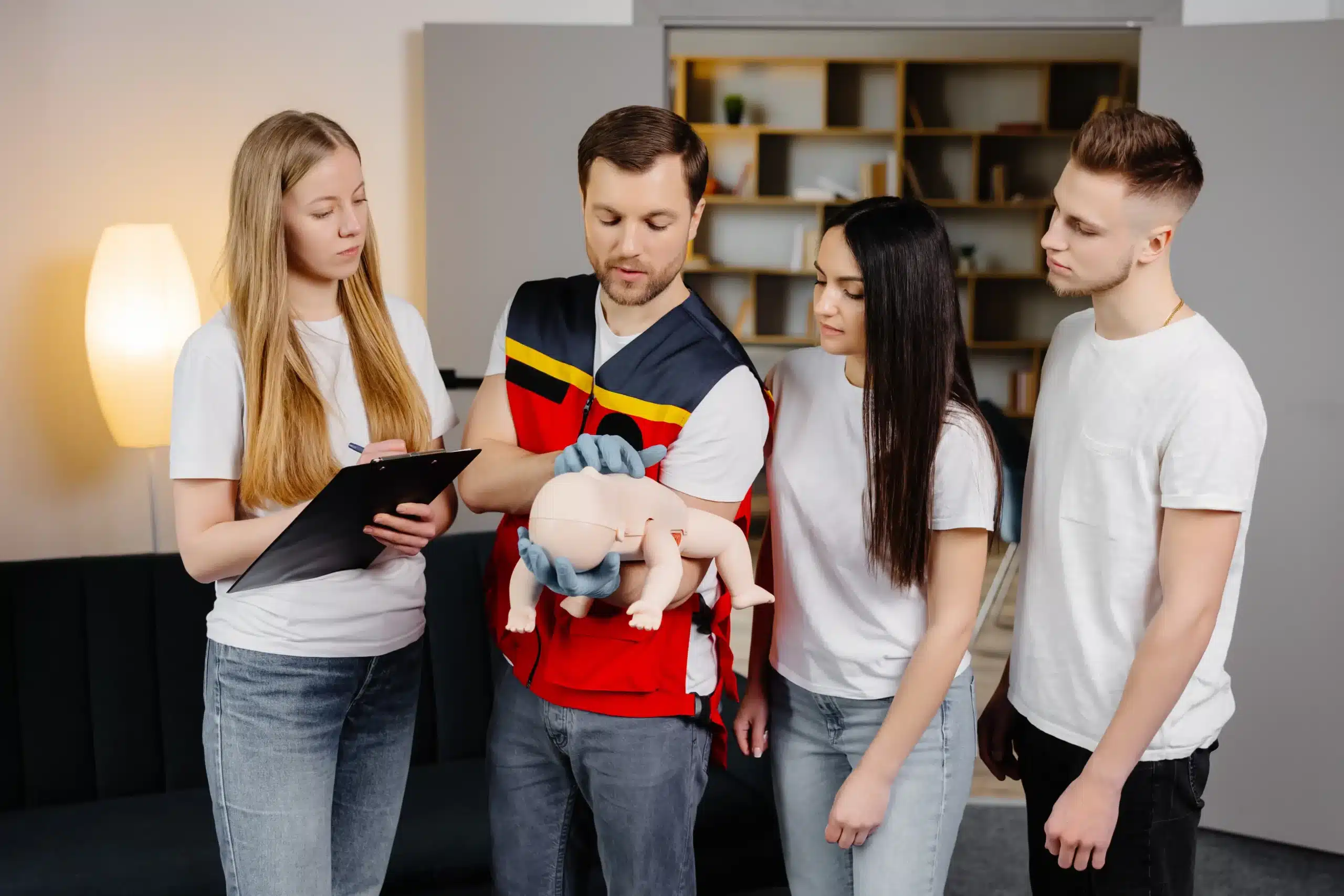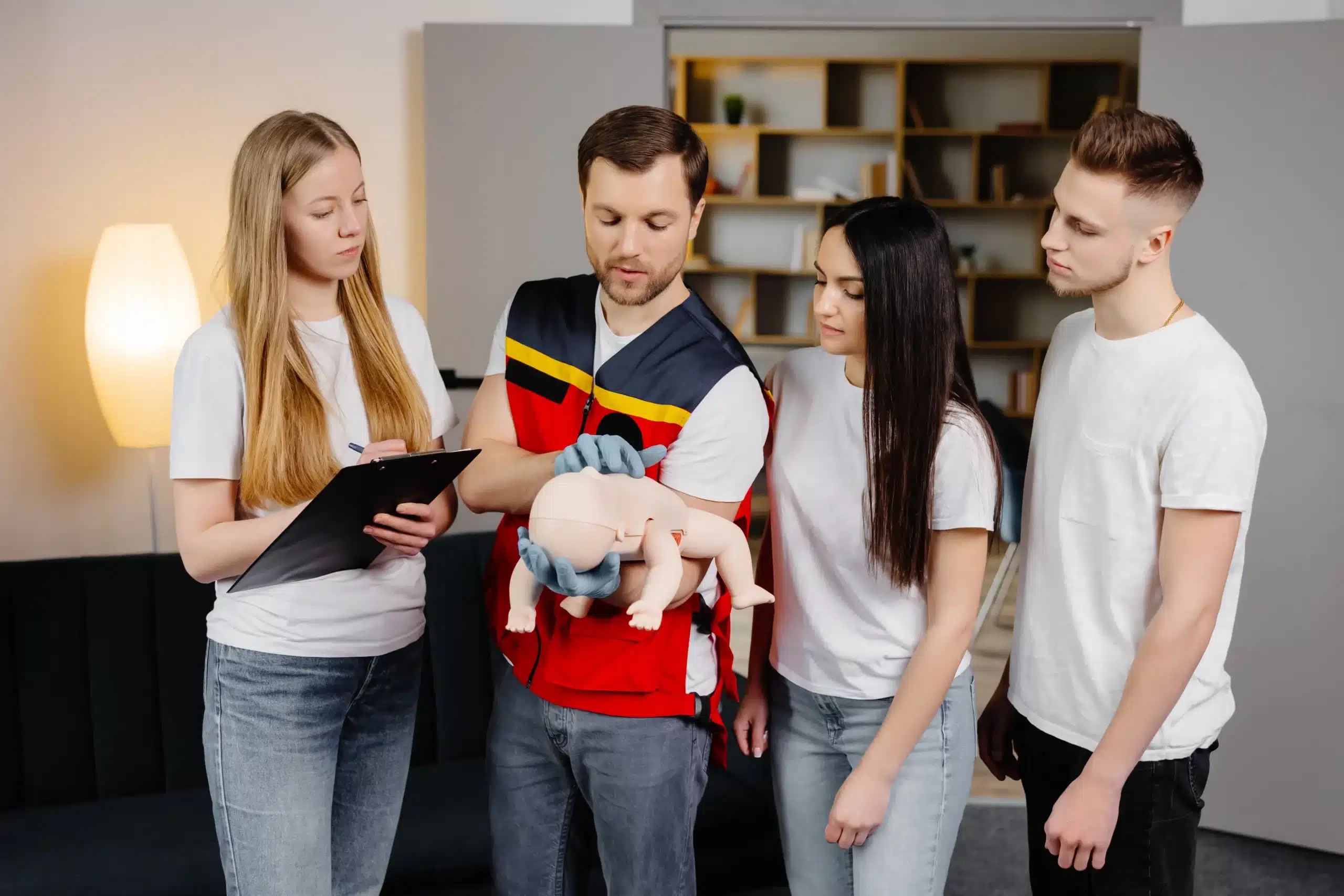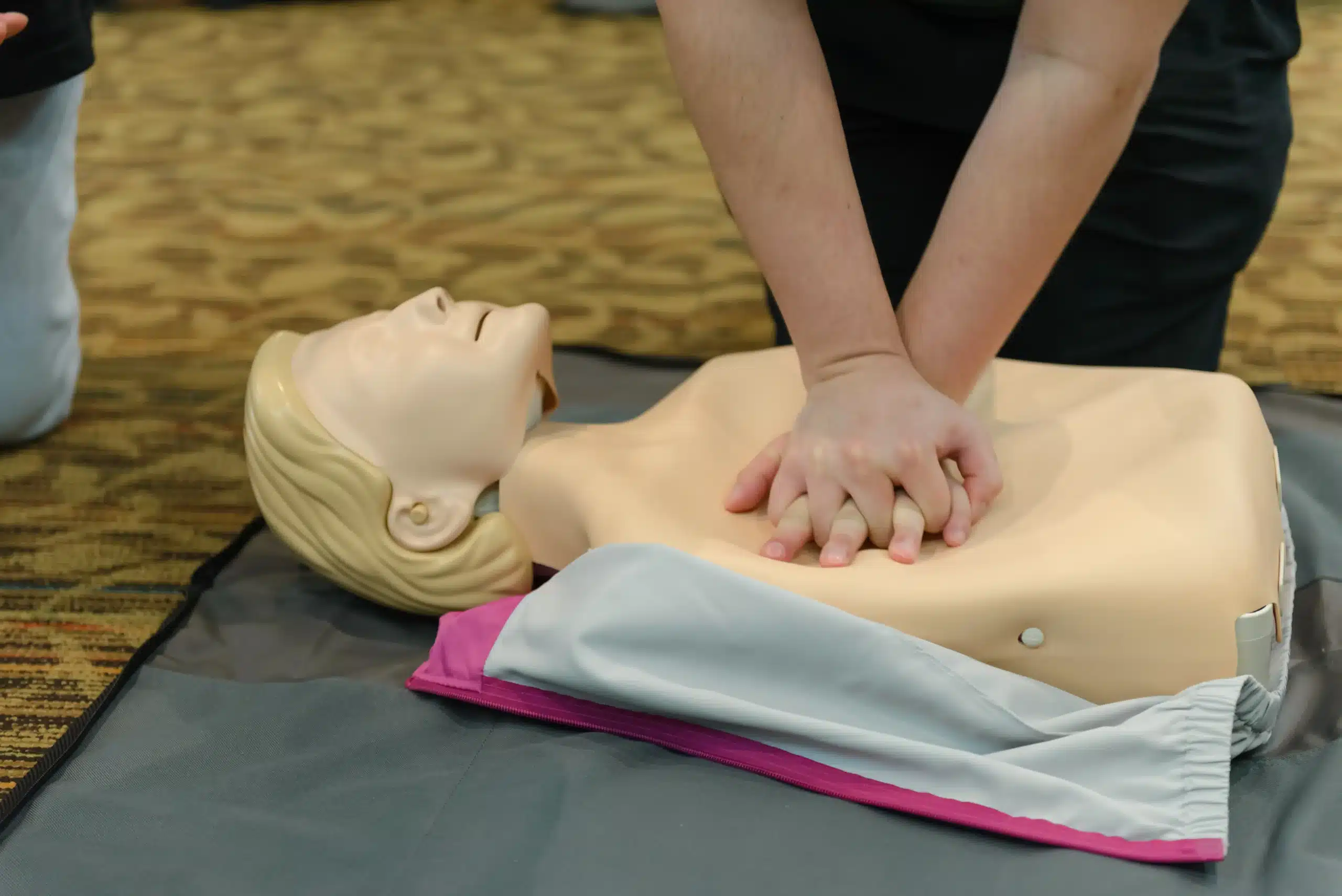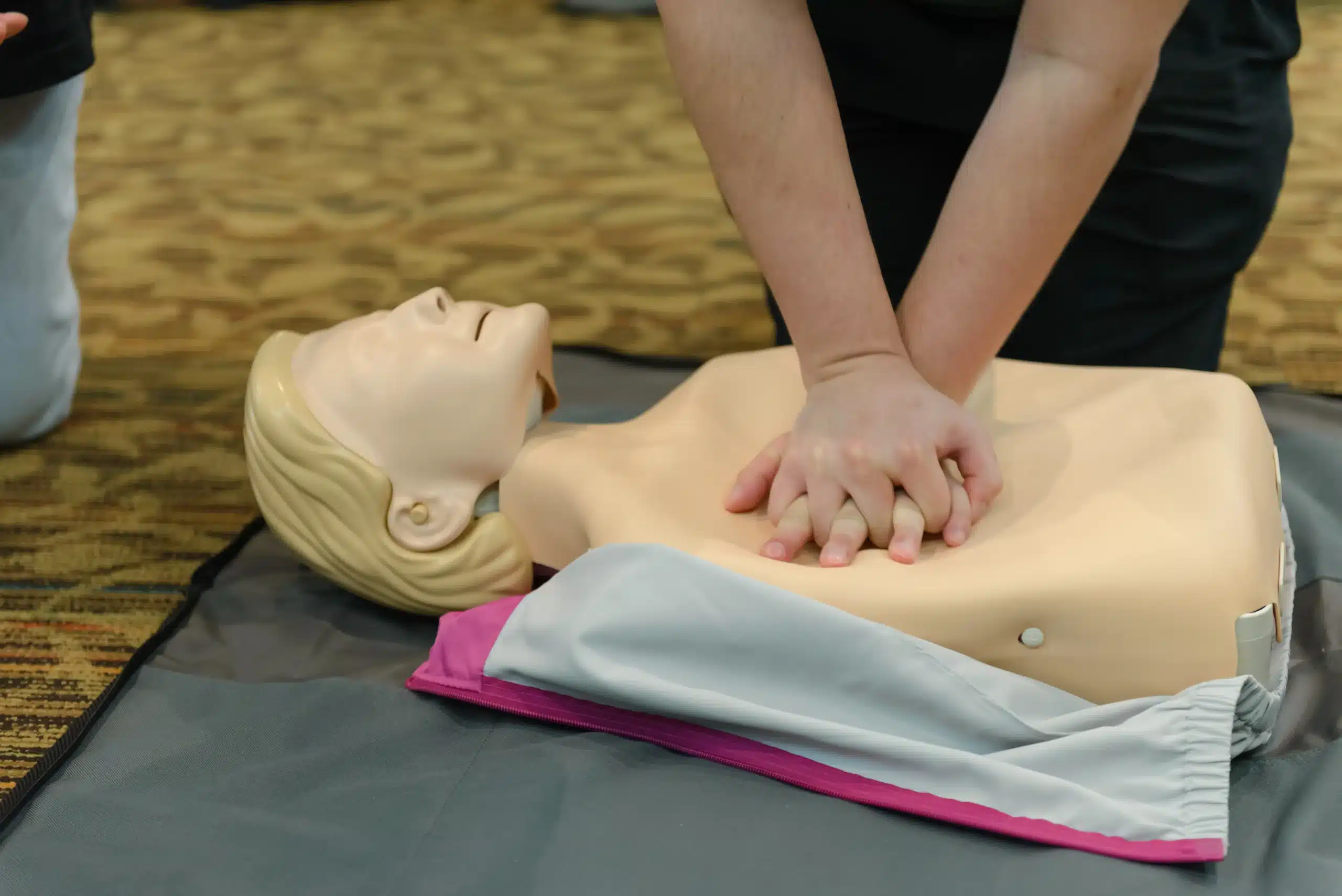Working in healthcare in San Francisco means being prepared for anything. BLS for healthcare providers in San Francisco isn’t just a checkbox on a job application; it’s a fundamental skill set that can save lives. This guide breaks down the essentials of BLS certification, from the core life-saving techniques you’ll learn to the process of finding the right training program in the San Francisco area. We’ll explore the benefits of BLS certification, the different learning formats available, and answer some frequently asked questions to help you get started. Whether you’re renewing your certification or taking a BLS course for the first time, this article will provide you with the information you need.
Key Takeaways
- BLS certification is crucial for healthcare professionals: It provides essential life-saving skills, like CPR and AED use, needed in various medical emergencies. This training is often required for employment and demonstrates a commitment to patient safety.
- Choosing the right BLS course matters: Look for AHA-accredited providers with experienced instructors, and consider factors like class size and hands-on practice opportunities. Reviews and price comparisons can help you find the best fit.
- Preparation maximizes your BLS training: Review course materials beforehand and select a learning format (in-person, online, or blended) that suits you. Regular practice after completing the course maintains your skills and confidence in emergencies.
What is BLS for Healthcare Providers?
Basic Life Support (BLS) certification is essential for healthcare professionals. It equips you with the skills to respond to life-threatening emergencies, providing crucial care until more advanced medical help arrives. BLS certification is often required for many healthcare jobs and demonstrates a commitment to patient safety. For those in the San Francisco area, you can find BLS certification courses through Safety Training Seminars.
What is BLS and why is it important?
BLS training is designed for healthcare providers like doctors, nurses, paramedics, and other medical personnel. It covers essential life-saving techniques, focusing on immediate intervention during critical situations. Maintaining a current BLS certification shows your preparedness to handle emergencies and provide vital support to patients. This training meets various licensing and certification requirements and builds confidence in your ability to deliver effective care. Learn more about BLS courses in San Francisco.
Essential skills taught in BLS
BLS courses cover a range of life-saving skills, including adult, child, and infant CPR and how to use an automated external defibrillator (AED). The training also teaches how to help someone who is choking, provide basic first aid, and understand fundamental heart function. These skills are essential for any healthcare provider, enabling effective responses to various medical emergencies.
Life-saving techniques for emergencies
BLS training emphasizes critical thinking and teamwork, preparing you to assess emergencies accurately and work effectively with other medical professionals. You’ll learn to recognize life-threatening situations, such as cardiac arrest, and take appropriate action. The focus is on providing primary emergency care, stabilizing the patient, and ensuring their survival until more advanced medical assistance arrives. The American Red Cross offers additional information on BLS for healthcare providers.
Find BLS Certification in San Francisco
If you’re a healthcare provider in the San Francisco Bay Area, BLS certification is essential. Luckily, several excellent training centers offer courses to fit your schedule and learning style. Let’s explore the options available.
Training Formats: In-Person, Online, and Blended Learning
BLS training comes in several formats. In-person classes provide hands-on instruction and direct interaction with instructors. Online courses offer flexibility for those with busy schedules or who prefer self-paced learning. Blended learning combines online modules with in-person skills sessions, offering a balance of convenience and practical experience. Consider which format best suits your needs and learning preferences.
Top San Francisco Providers
Finding the right provider is key to a positive learning experience. Here are a few reputable options in San Francisco:
Safety Training Seminars
Safety Training Seminars offers various American Heart Association (AHA) certification courses, including BLS, ACLS, PALS, CPR, and First Aid. They are known for their competitive pricing and commitment to excellent customer service. Serving San Francisco, Daly City, San Mateo, and Oakland, they offer convenient locations throughout the Bay Area. Check their website for their low price guarantee.
American Red Cross
The American Red Cross is a nationally recognized organization providing BLS certification and renewal courses. Their established reputation and widespread availability make them a reliable choice for many healthcare professionals.
Revive CPR
Revive CPR offers AHA BLS certification and renewal classes. Check their website for course schedules and locations in San Francisco.
Heart Start CPR
Heart Start CPR is an AHA-certified organization specializing in BLS, ACLS, PALS, and fire training for healthcare workers. They focus on providing comprehensive training for healthcare providers in the San Francisco area.
In Home CPR
In Home CPR brings AHA BLS certification courses directly to you, offering training at your home or workplace throughout the San Francisco Bay Area. This convenient option is ideal for busy professionals or groups seeking flexible training solutions.
BLS Certification: Cost, Duration, and Renewal
San Francisco Pricing
BLS certification courses in San Francisco typically cost between $75 and $150. This price range depends on the training provider, the course format (in-person or blended learning), and whether course materials are included. Safety Training Seminars offers a low price guarantee to ensure you receive high-quality training at a competitive price.
Course Length and Certification Validity
A BLS course for healthcare providers covers essential life-saving techniques, including adult, child, and infant CPR; using an AED; and relieving choking. The curriculum also includes basic first aid and a foundational understanding of the heart. Expect plenty of hands-on practice to build your skills and confidence. In-person BLS classes typically last three to four hours and are available at various locations throughout the Bay Area. BLS certification is valid for two years.
Recertification Process
The American Heart Association recommends renewing your BLS certification before it expires to maintain your skills and credentials. Recertification courses cover the same core content as the initial certification and are designed for healthcare professionals whose certifications are nearing expiration. Safety Training Seminars offers BLS recertification courses to help you stay current.
Choose the Right BLS Training Provider
Finding the right BLS training provider is crucial for a positive and effective learning experience. Here’s what to consider:
Accreditation and Instructor Qualifications
First, confirm the provider’s accreditation. Healthcare providers should look for courses following the American Heart Association (AHA) guidelines. AHA-accredited providers, like Safety Training Seminars, ensure your training meets the highest standards. Also, verify instructor qualifications. Experienced, certified instructors contribute to a better learning environment. Safety Training Seminars offers AHA-certified courses designed for healthcare providers in San Francisco.
Class Size and Hands-On Practice
Consider class size and hands-on practice opportunities. Smaller classes often allow for more personalized instruction. Providers like Heart Start CPR offer in-person classes in San Francisco, creating a supportive environment for practicing skills. A good balance of instruction and hands-on training is key to mastering BLS.
Reviews and Past Participant Feedback
Finally, check past participant reviews and feedback. Sites like Yelp and Google offer insights into other students’ experiences. Safety Training Seminars is known for its pricing and comprehensive AHA courses, making it a popular choice in the San Francisco Bay Area. Positive reviews often reflect the quality of instruction and the overall learning experience. Research and choose a provider that meets your needs.
Prepare for Your BLS Certification Course
Getting ready for your BLS certification course? A little prep work goes a long way. Here’s how to get the most out of your training:
Pre-course study tips
BLS training empowers you to save lives. From healthcare professionals to everyday people, it provides the skills to respond confidently during medical emergencies. Before your class, familiarize yourself with the course materials. Even a quick overview can make the in-class learning experience more effective, allowing you to focus on practicing the techniques.
What to expect during training
Your BLS provider course will cover essential, life-saving skills and techniques for providing primary emergency care. You’ll learn how to respond to individuals experiencing cardiac arrest or other life-threatening emergencies. Expect a combination of lectures, demonstrations, and hands-on practice. You’ll also learn how to use an AED (automated external defibrillator). BLS classes in San Francisco typically cost between $50 and $150, depending on the provider, format, and included materials. Safety Training Seminars offers a low price guarantee, so you can feel confident you’re getting a great value.
Maximize your learning
Safety Training Seminars offers a comprehensive selection of American Heart Association (AHA) courses, including BLS certification. BLS training is available in several formats, including in-person classes, online courses, and blended learning. Consider which learning style best suits you. For healthcare professionals, the AHA’s RQI program offers a modern approach to BLS certification, focusing on hands-on practice and real-time feedback. After your course, continue practicing your skills to maintain proficiency. Regular review and practice will build your confidence and ensure you’re always ready to respond in an emergency.
Benefits of BLS Certification
BLS certification offers a range of benefits, from enhancing patient care to improving your career prospects. Whether you’re a seasoned healthcare professional or just starting out, BLS training equips you with essential skills and confidence to handle emergencies effectively.
Improve patient care and meet job requirements
BLS certification is fundamental for healthcare providers. It empowers you to respond effectively during medical crises, directly impacting patient outcomes. From understanding how the heart works to performing CPR on adults, children, and infants, the comprehensive training provided in a BLS course gives you the tools to provide immediate, life-saving care. Many healthcare roles require this certification, demonstrating a commitment to patient safety and high-quality care. The hands-on practice included in most courses ensures you can confidently apply these skills in real-world situations. This practical experience is invaluable in preparing you for the demands of a healthcare environment.
Advance your career
A BLS certification can significantly enhance your career trajectory. It’s often a prerequisite for many healthcare positions, making you a more competitive applicant. Employers value the dedication and skills demonstrated by BLS-certified professionals. For example, Safety Training Seminars offers high-quality American Heart Association (AHA) courses, including BLS. Earning your certification can open doors to new opportunities and showcase your commitment to professional development within the healthcare field. It also demonstrates your preparedness to handle critical situations, a valuable asset in any healthcare setting.
Build confidence in emergencies
Beyond the technical skills, BLS certification instills confidence in your ability to manage emergencies. Knowing you have the training to perform life-saving techniques like using an AED or helping someone who is choking empowers you to act decisively under pressure. This confidence translates to improved patient care and better outcomes. The curriculum often emphasizes critical thinking and teamwork, further preparing you to handle emergencies effectively as part of a team. Red Cross BLS training, for instance, highlights these crucial skills. This preparedness can make a profound difference in life-or-death situations.
BLS Training FAQs
What is BLS training?
BLS training gives healthcare providers the skills they need to respond to medical emergencies. It focuses on primary emergency care for people experiencing cardiac arrest or other life-threatening conditions. Think of it as the foundation for saving lives. You’ll learn how to assess a situation, perform CPR, and provide other essential support until more advanced help arrives.
Who needs BLS training?
BLS certification is vital for many healthcare professionals, including doctors, nurses, and EMTs. It’s often a job requirement and shows you can handle emergencies. This guide offers a comprehensive look at BLS certification in San Francisco. Even if it’s not mandatory for your role, having BLS training can make you a more valuable and confident member of any healthcare team.
What does a BLS course cover?
BLS courses cover a range of life-saving techniques. You’ll learn adult, child, and infant CPR, how to use an AED, and what to do if someone is choking. The training also includes basic first aid and information on cardiac emergencies. Most programs emphasize hands-on practice, so you’ll gain real-world experience and confidence in your abilities. For a detailed look at what’s covered, review this overview.
How long is BLS training?
In-person BLS classes usually take three to four hours. Many providers in the Bay Area offer same-day certification, making it easy to fit the training into your schedule. This article on BLS certification in San Francisco offers more information on course duration and options.
How much does BLS training cost?
BLS certification in San Francisco typically costs between $75 and $150. The price can vary depending on the training provider and course format. Check with different providers to find the best fit for your budget. This guide has more details on BLS costs in San Francisco.
How often do I need to renew my BLS certification?
BLS certification is valid for two years. To keep your skills sharp and stay up-to-date with the latest guidelines, recertify before your current certification expires. The Red Cross provides more information on BLS certification and renewal.
What training formats are available?
BLS training comes in several formats, including in-person classes, online courses, and blended learning (a mix of online and in-person instruction). This flexibility makes it easier to find a format that works with your schedule and learning style. This article explores the various BLS class formats available.
Related Articles
- Find the Best BLS Classes in San Francisco – San Francisco CPR Classes
- Advanced Cardiac Life Support (ACLS) in SF: Get Certified – San Francisco CPR Classes
- Basic Life Support (BLS) in SF: The Ultimate Guide – San Francisco CPR Classes
- BLS Certification in San Francisco: Your 2023 Guide – San Francisco CPR Classes
- BLS CPR Classes in San Francisco (Bayshore)
BLS Training FAQs
What exactly does BLS training involve?
BLS training provides healthcare providers with the essential skills to respond effectively to medical emergencies, particularly life-threatening situations like cardiac arrest. It emphasizes primary emergency care, equipping you with the knowledge and techniques to assess the situation, perform CPR, and deliver crucial support until more advanced medical assistance arrives. It’s the foundation for providing immediate care and potentially saving lives.
Who should consider getting BLS certified?
BLS certification is highly recommended for a wide range of healthcare professionals, including doctors, nurses, paramedics, and other medical personnel. It’s often a prerequisite for many healthcare jobs and demonstrates your commitment to patient safety and high-quality care. Even if it’s not strictly required for your current role, BLS training can enhance your skills and confidence in emergency situations, making you a more valuable asset to any healthcare team. Check out this helpful guide for more information on BLS certification in San Francisco.
What topics are covered in a typical BLS course?
BLS courses cover a comprehensive range of life-saving techniques, including CPR for adults, children, and infants, how to use an automated external defibrillator (AED), and how to assist someone who is choking. The training also includes basic first aid principles and essential information about managing cardiac emergencies. Most BLS courses prioritize hands-on practice to build your skills and confidence, ensuring you can effectively apply these techniques in real-world scenarios. For a more detailed overview of the course content, take a look at this resource.
How long does it take to complete BLS training?
In-person BLS courses typically require three to four hours to complete. Many training providers in the Bay Area offer same-day certification, allowing you to acquire this valuable credential conveniently and efficiently. This article provides additional details on BLS course duration and available options in San Francisco.
What is the typical cost of BLS training?
The cost of BLS certification in San Francisco generally ranges from $75 to $150. The exact price can vary based on the training provider, the course format (in-person, online, or blended), and whether course materials are included in the fee. It’s always a good idea to compare prices from different providers to find the best value for your investment. This guide offers more specific information on BLS training costs in the San Francisco area.


